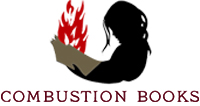Crypto-fascists and pro-White separatists are entering and recruiting from progressive circles. This essay offers some guidelines for identifying and dealing with this problem.
In the not-so-distant past, one had little problem identifying a White separatist. Generally, they came in two styles: white hoods and burning crosses, or oxblood Doc Martens and swastika tattoos. Both were usually shouting vulgar epithets about African-Americans, Jews, and LGBTQ folks. And their relationship with the Left was usually in the form of breaking either bookstore windows or activists’ bones—if not outright murder. Barring them from progressive spaces was an act of physical self-preservation—not a show of political principles in drawing a line against ideological racism and fascism.
Today, White separatists don’t always come in such easily identifiable forms, either in their dress or politics. A part of the White separatist and related Far Right movement has taken some unusual turns. Some fascists seek alliances with ultranationalist people of color—a few of whom, in turn, consider themselves fascists. New types of groups embrace White separatism under a larger banner of decentralization. For many decades, the Far Right has disguised or rebranded its politics by establishing front groups, deploying code words, or using other attempts to fly under the radar. As the years pass by, some of these projects have taken on lives of their own as these forms have been adopted by those with different agendas. Simultaneously, there is a revival of fascist influence within countercultural music scenes. And intertwined with these changes is a renewed attempt on the part of some White separatists to participate in, or cross-recruit from, progressive circles.
This essay was written after a multi-year collaboration with a number of anti-fascist activists; we have struggled to understand this new phenomenon and craft ways to deal with it. I will attempt to: explain why Far Right actors should not be allowed to participate in progressive circles, suggest criteria regarding where the line should be drawn in defining which politics are problematic enough to take action against, and offer suggestions on how to communicate with and encourage individuals who may want to leave those movements.
Read the full article “Drawing Lines Against Racism and Fascism” here.















